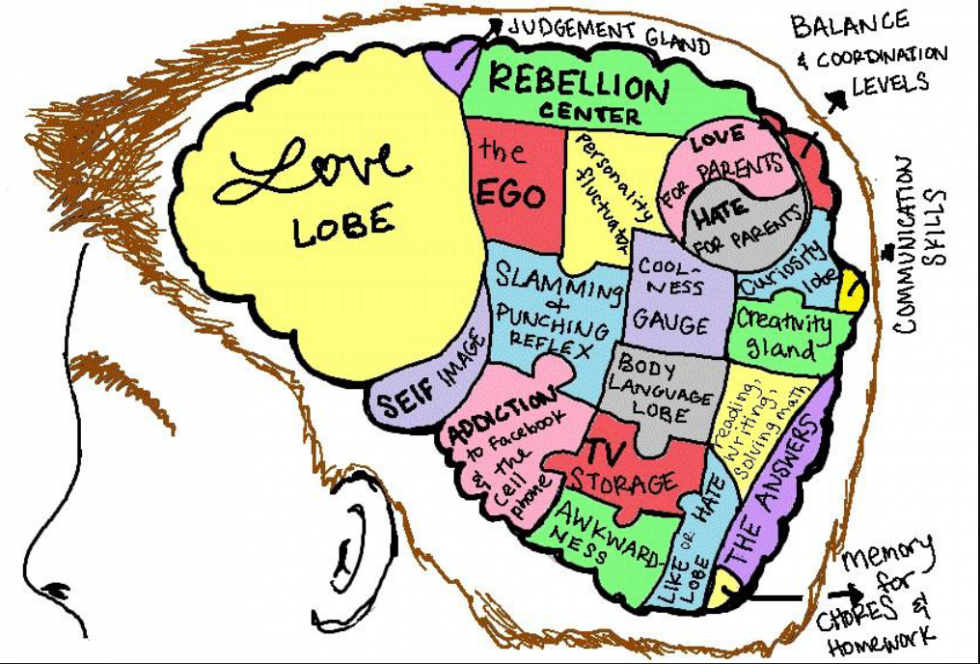ADOLESCENT BRAIN
What Every Middle Grades Educator Should Know
By Susan Simpson and Diane James, SREB
 Public education focuses a lot of
attention on the early grades and high school, but what about the
middle grades? These are challenging years for students as young
adolescents experience significant developmental changes
regarding their physical, cognitive, social, and emotional
growth.
Public education focuses a lot of
attention on the early grades and high school, but what about the
middle grades? These are challenging years for students as young
adolescents experience significant developmental changes
regarding their physical, cognitive, social, and emotional
growth.
The brain of young adolescents between the ages of 10 and 14 undergoes intense changes that have significant implications for behavior and learning according to Andrew Maxey, director of strategic initiatives of Tuscaloosa City Schools in Alabama and former middle school principal.
The prefrontal cortex of the brain, which is involved in decision-making, planning, prioritizing and controlling impulses, is still developing in young adolescents. This may explain why middle schoolers are often stereotyped as being impulsive, crazy, lazy and having no self-control, notes Maxey.
But he contends educators shouldn’t allow negative stereotyping to influence how they feel about their work. Instead of viewing the middle grades as frustrating, Maxey suggests teachers consider it a time of incredible opportunity. “The more you understand the humans you’re serving, the more effective your decisions about them are likely to be,” he says.
Four Things to Know About Young Adolescents’ Brains
- Human brains develop more rapidly during young adolescence
years, and the physiological impacts of puberty have profound
effects on how learning happens. With the brain and body
changing, middle schoolers have a lot going on.
Maxey says their brains are “racing down rabbit trails all the time,” and it can be difficult for them to focus attention on one thing for any length of time. He maintains the attention span of the typical adolescent brain ranges from 10 to 12 minutes, and they can only handle five to seven bits of information at one time.
With this in mind, there are numerous ways teachers can leverage the potential of middle schoolers’ brains. For example, structure short classroom lessons and switch to something equally challenging, but new, a few minutes later. This kind of regrouping, Maxey suggests, has a greater impact on learning than having longer lessons.
- Scientists have long believed there is a rewiring and pruning
of the brain that takes place during the adolescence years. Maxey
describes it as a use-it or lose-it process in which pathways to
the brain that are actively engaged remain and are strengthened,
but those that are underutilized are retired.
Maxey believes teachers can take advantage of this process by giving students opportunities to engage in critical thinking and explore through project- and problem-based learning. The more they are engaged in these activities, the more the skills that they learn become hard-wired.
- Young adolescents need to feel that they belong in school.
Maxey indicates it’s valuable for schools to provide structures
or layers of belonging, ranging from grouping to extracurricular
activities “as opposed to having students whose only connection
is to the school itself.”
- There’s an abundance of research about the adolescent brain and Maxey encourages educators to study and understand it and realize that most middle schoolers are not usually forgetting things, misbehaving or acting immature to annoy teachers. Their behavior is normal for their age group, he says.
Middle Schools Matter
Public education should invest as heavily in understanding research about the adolescent brain as it does in other areas of education, notes Maxey. He goes on to say, “Budgets are priority statements. If you show me a district and tell me it has a stated focus, all of my money is on early literacy or reading before third grade or for college and career preparedness. We stay silent to anything unique to the middle level,” says Maxey.
He urges policymakers — superintendents, school boards and state-level decision-makers — to give the same focus and attention to the middle grades as they do high schools. He concludes, what they are “trying to accomplish at the high school level might be more accessible if we pivot and put a strong emphasis on the middle level.”
Contact: Andrew Maxey, amaxey@tusc.k12.al.us
This article was featured in the October 2022 issue of SREB School Improvement’s Promising Practices Newsletter.



